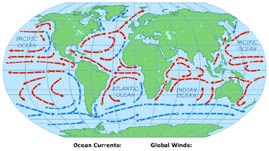Native housing of Northern Alaskan Region
The connection between climate, cultures and oceans is also observable, first fact that the oceans cover 71% of the planet. Oceans supply the human race with 80% of protein consumed, fish. Thats 3.5 billion people depend on ocean for food, and that number will be doubled in 20 years. savethesea.org.
Extend/Eval: " Culture is a set of shared attitudes, values, goals and practices that characterize a group of people." Cultures are distinct ways people live in different parts of the world represented by their experiences and developed due to climate. "Climate encompasses statistics such as location, latitude, precipitation and temperature conditions over a time period." en.wikipedia.org It is apparent that change is happening to our planet and its many environments and ecosystems. This has been documented both by western scientists and Native cultures and their science methods.Dolly GArza--A Tlingit and Haida Scientist. Many Native cultures are impacted by the climate changes. Arctic ecosystems are changing from warming ocean currents, causing sea ice to melt. Because Arctic ecosystms are not as diverse, we are observing more drastic change in these areas. Decline in Arctic sea mammals, salmon population decrease due to warmer seasons and more animal species being wiped out. The Natives are so linked to the seasons and climate for their survival, they are seeing and feeling the changes in their environment more drastically. TD Arctic Egosystems and Athatbasicancouncil, Global Surface Currents, TD.  These ocean surface currents and this site explains some of the changes occuring in our oceans. The pollution that is being distributed through out the earth has had a profound impact. Along with the global warming from carbon gases being poured onto the atmosphere with the oceans absorbing majority of the heat. The burning of fossil fuels, all these are factors contributing to our earth changing and not for the better.www.nasa.gov The point being change is happening and the delicate balance of our earths ecosystems are being affected and so are the cultures and current climates which are all connected. So we must change our ways to help reduce the imapact we are creating so we may survive and continue. Change is good but can be difficult for some or even accepting that it must happen.
These ocean surface currents and this site explains some of the changes occuring in our oceans. The pollution that is being distributed through out the earth has had a profound impact. Along with the global warming from carbon gases being poured onto the atmosphere with the oceans absorbing majority of the heat. The burning of fossil fuels, all these are factors contributing to our earth changing and not for the better.www.nasa.gov The point being change is happening and the delicate balance of our earths ecosystems are being affected and so are the cultures and current climates which are all connected. So we must change our ways to help reduce the imapact we are creating so we may survive and continue. Change is good but can be difficult for some or even accepting that it must happen.
 These ocean surface currents and this site explains some of the changes occuring in our oceans. The pollution that is being distributed through out the earth has had a profound impact. Along with the global warming from carbon gases being poured onto the atmosphere with the oceans absorbing majority of the heat. The burning of fossil fuels, all these are factors contributing to our earth changing and not for the better.www.nasa.gov The point being change is happening and the delicate balance of our earths ecosystems are being affected and so are the cultures and current climates which are all connected. So we must change our ways to help reduce the imapact we are creating so we may survive and continue. Change is good but can be difficult for some or even accepting that it must happen.
These ocean surface currents and this site explains some of the changes occuring in our oceans. The pollution that is being distributed through out the earth has had a profound impact. Along with the global warming from carbon gases being poured onto the atmosphere with the oceans absorbing majority of the heat. The burning of fossil fuels, all these are factors contributing to our earth changing and not for the better.www.nasa.gov The point being change is happening and the delicate balance of our earths ecosystems are being affected and so are the cultures and current climates which are all connected. So we must change our ways to help reduce the imapact we are creating so we may survive and continue. Change is good but can be difficult for some or even accepting that it must happen.







